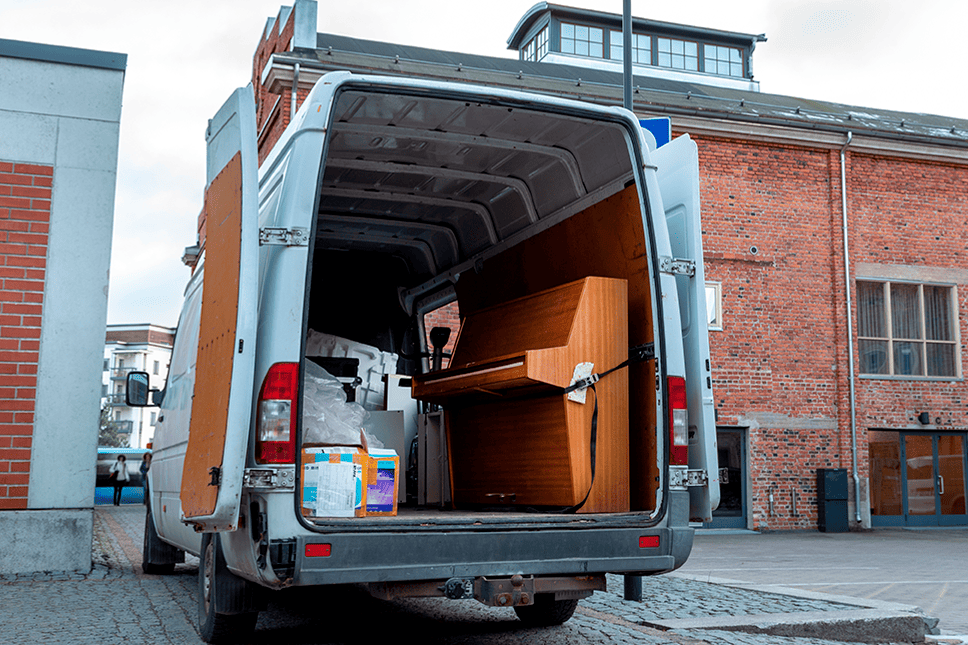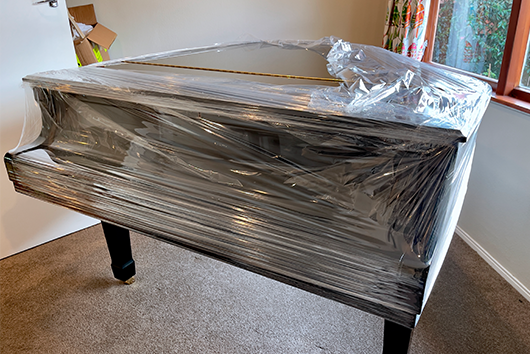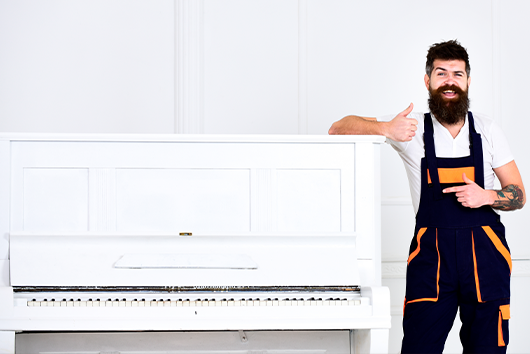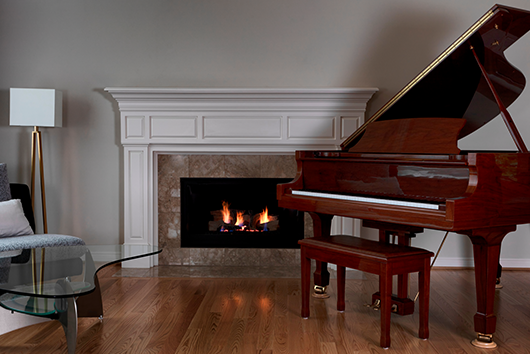
Moving a piano isn’t just about muscle power—it’s an art that requires precision, care, and the right equipment. If you’re relocating a piano in the Inland Empire, you’re dealing with unique challenges: the region’s hot, dry climate, potentially tricky terrain, and ensuring your valuable instrument stays in perfect condition. But don’t worry—we’ve got you covered!
Whether you’re moving your piano to another room or a new city, this expert guide will walk you through every step of the process to make your piano move smooth and stress-free.
Why Pianos Require Special Moving Techniques in the Inland Empire
Pianos aren’t just heavy—they’re delicate. We’re talking about instruments that can weigh anywhere from 300 to 1,200 pounds while containing thousands of intricate moving parts. One wrong move, and you’re looking at costly damage to the keys, soundboard, or internal components. That’s why piano moving requires special techniques and equipment to prevent damage and ensure a safe relocation.
Furthermore, the hot and dry climate of the Inland Empire can cause wood to expand or contract, impacting tuning and structural integrity. Thus, it is highly recommended to keep your piano in a controlled environment during transportation to avoid unnecessary stress on the instrument.
 Understanding the Challenges of Piano Moving
Understanding the Challenges of Piano Moving
Weight Distribution
A piano’s weight isn’t evenly distributed. Hence, moving it without proper handling techniques is difficult. Grand pianos, for example, have most of their weight concentrated in the back, requiring extra support during transport.
Fragile Components
Even the smallest impact can knock a piano out of tune or damage delicate internal components. Keys, pedals, and the soundboard are particularly vulnerable and require careful padding and securing during the move.
Space Constraints
Moving a piano through narrow hallways, tight corners, or staircases requires precise maneuvering. Movers must plan ahead to create \\a clear and safe path for transport.
 Finding the Right Piano Mover in the Inland Empire
Finding the Right Piano Mover in the Inland Empire
Ask for Recommendations
The best way to find a reliable piano mover? Word of mouth! Ask friends, family, or your local music store for recommendations. Professional piano tuners and repair shops often have trusted movers they work with regularly.
Websites like Google Reviews, Yelp, and Angie’s List can offer insights into previous customers’ experiences. Look for movers with consistently high ratings and comments about their professionalism, timeliness, and piano-handling expertise.
Verify Their Experience and Credentials
Not all San Diego long-distance movers are created equal. Just because someone can haul a couch doesn’t mean they should handle your piano! Ask potential movers:
- How many pianos have they moved?
- Do they use specialized equipment like piano dollies and skid boards?
- Are they licensed and insured?
- Do they offer climate-controlled transportation for long distances?
A reputable piano mover should have proper licensing and comprehensive insurance coverage in case of accidental damage.
How Much Does It Cost to Move a Piano in the Inland Empire?
Piano moving costs can vary depending on several factors:
- Type of piano: Grand pianos require more work than uprights.
- Distance: Local moves typically cost $200–$500, while long-distance moves can range from $1,000–$3,000.
- Accessibility: Stairs, tight spaces, and narrow hallways may add to the cost.
- Additional services: Climate-controlled transport, tuning, and storage can increase the price.
To avoid surprises, always request a detailed, written estimate from multiple movers before making a decision.
 Preparing Your Piano for the Move
Preparing Your Piano for the Move
Before the San Diego professional movers arrive, take some steps to protect your instrument:
1. Assess your piano’s condition
Inspect your piano for any existing scratches, loose parts, or fragile components. If you are aware of any issues, inform your movers so they can take extra precautions.
2. Clean your piano
Dust and debris can accumulate around the keys, pedals, and strings. Use a soft, dry cloth to clean your piano before moving gently—just avoid harsh chemicals that could damage the finish.
3. Measure everything
Nothing’s worse than getting stuck in a doorway! Measure:
- The piano’s dimensions
- Hallways and doorways
- The moving path to guarantee clearance
Remove doors or create a wider path before the move begins.
The Piano Moving Process: Step by Step
1. Gather the right equipment
Professional piano movers like Oakley Relocation use specialized tools to ensure a safe move, including:
- Piano dollies for rolling the piano safely
- Moving straps to secure the instrument
- Protective blankets to prevent scratches
- Padding and covers to protect delicate components
2. Use safe lifting techniques
Lifting a piano is all about technique, not brute force. Movers should:
- Keep a broad stance with feet shoulder-width apart.
- Bend at the knees, not the waist.
- Keep the piano upright at all times—never tilt it on its side!
- Move slowly and carefully, especially through tight spaces or stairs.
3. Navigate stairs and doorways
Moving a piano upstairs or downstairs requires extra caution. Professional movers use ramps or skid boards to minimize impact. If stairs are particularly tricky, they may use a crane lift—yes, sometimes pianos need to go through windows!
4. Use climate-controlled trucks
For long-distance moves, climate-controlled trucks are a must to prevent warping due to temperature changes. Movers will secure the piano inside the vehicle using straps to prevent shifting during transit.
 Setting Up Your Piano in Its New Home
Setting Up Your Piano in Its New Home
Once your piano arrives at its new location, there are a few final steps to ensure it’s ready to play:
1. Choose the right spot
Where you place your piano matters! Keep it away from direct sunlight, heating vents, and exterior walls, as these can affect its tuning and longevity.
2. Let it acclimate
After moving, your piano needs time to adjust to its new environment. Wait about two weeks before tuning it to allow the wood and strings to settle.
3. Schedule a professional tuning
Moving can shift internal components, so post-move tuning is essential. A professional tuner will get your piano sounding its best again.
Common Mistakes to Avoid While Moving a Piano
1. Moving a Piano Without Professional Help
Many assume they can handle moving a piano with a few strong friends, but without proper training and equipment, it’s easy to damage the instrument or cause injury.
2. Skipping Insurance
Even with the best movers, accidents happen. Make sure your chosen moving company provides adequate insurance coverage for your piano.
3. Forgetting to Tune Your Piano After the Move
After relocation, your piano may need tuning due to shifts in humidity and movement. Schedule a professional tuning session after allowing your piano to settle for a couple of weeks.
Should you DIY or hire professionals for a piano move?
While it’s tempting to save money with a DIY move, piano moving is best left to the pros. One wrong step can lead to costly damage—or worse, serious injury. Professional movers have the expertise and equipment to handle the job safely and efficiently.
Move your piano effortlessly with San Diego specialty movers
Moving a piano in the Inland Empire requires careful planning, expert handling, and the right equipment. Oakley Relocation specializes in safely transporting delicate instruments with precision and care.
With years of experience, specialized equipment, and climate-controlled transportation, we make sure that your piano arrives in perfect condition. Trust San Diego’s premier specialty movers — contact Oakley Relocation today for a stress-free move! Get a free quote today.


 Understanding the Challenges of Piano Moving
Understanding the Challenges of Piano Moving Finding the Right Piano Mover in the Inland Empire
Finding the Right Piano Mover in the Inland Empire Preparing Your Piano for the Move
Preparing Your Piano for the Move Setting Up Your Piano in Its New Home
Setting Up Your Piano in Its New Home